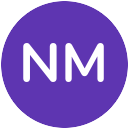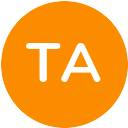9 Alternatives to Canvas for Online Course Management and Collaboration
By Gregor K. published about 2022-12-28 23:44:02
Are you looking for websites like Canvas? Canvas is an online learning platform that provides powerful, intuitive tools for teachers and students. But if you're looking for alternatives to Canvas, you've come to the right place. In this article, we'll look at some of the best websites like Canvas that offer similar features and benefits. Read on to find out more about these great options!
Canvas
Canvas is a powerful and intuitive Learning Management System and Online Collaboration Platform, designed to make teaching and learning easier for all. Canvas provides an intuitive and comprehensive platform to help educators manage student learning, create content, and collaborate with colleagues.
Features
- Easy to use, intuitive interface
- Tools for creating, managing, and delivering content
- Integrated collaboration tools
- Comprehensive analytics for tracking student progress
- Secure and reliable storage for course materials
- Flexible grading system
- Mobile app support
- Private communication and collaboration tools
- Integration with third-party services and applications
Table of Contents
- 1Introduction
- 2Canvas Alternatives
-
3Head-to-Head Comparisons
- 3.1Canvas vs Adobe Express
- 3.2Canvas vs Blackboard
- 3.3Canvas vs Canva
- 3.4Canvas vs Edmodo
- 3.5Canvas vs Fabric
- 3.6Canvas vs Figma
- 3.7Canvas vs Google Classroom
- 3.8Canvas vs Gildan
- 3.9Canvas vs SVG
- 3.10Canvas vs Moodle
- 3.11Canvas vs Schoology
- 3.12Canvas vs Teachable
- 3.13Canvas vs Wool
- 3.14Canvas vs Webtoon
- 3.15Canvas vs Wix
- 3.16Canvas vs Yarn
- 3.17Canvas vs Zoom
- 3.18Canvas vs Adobe Spark
- 3.19Canvas vs Adobe Illustrator
- 3.20Canvas vs Adobe Photoshop
- 4Canvas History
- 5Canvas Status
- 6Comments
- 7Further Links
Canvas Alternatives
Moodle
Moodle and Canvas are both open-source Learning Management Systems (LMS) that provide a platform for educators to create and manage online courses.
Moodle is more customizable, allowing for greater customization of the user experience. It also includes features such as forums, quizzes, and surveys that Canvas does not offer.
Blackboard
Blackboard and Canvas are both Learning Management Systems (LMS) that allow educators to create and manage online courses.
Blackboard offers more features than Canvas, such as a built-in virtual classroom, automated grading, and the ability to customize the user interface.
Google Classroom
Google Classroom and Canvas are both Learning Management Systems (LMS) that enable educators to create and manage online courses.
Google Classroom is more user-friendly and does not require any additional software or hardware to use. It is also integrated with Google Drive and Gmail, allowing for easy file sharing and collaboration.
Schoology
Schoology and Canvas are both Learning Management Systems (LMS) that enable educators to create and manage online courses.
Schoology offers a more comprehensive set of tools than Canvas, including a mobile app and the ability to embed third-party content into courses.
Edmodo
Edmodo and Canvas are both Learning Management Systems (LMS) that enable educators to create and manage online courses.
Edmodo is more focused on collaboration than Canvas, offering features such as a built-in messaging system, polls, and the ability to create and join groups.
D2L Brightspace
D2L Brightspace and Canvas are both Learning Management Systems (LMS) that enable educators to create and manage online courses.
D2L Brightspace offers more features than Canvas, such as a mobile app and the ability to integrate content from external sources such as YouTube and Google Drive.
eFront
eFront and Canvas are both Learning Management Systems (LMS) that enable educators to create and manage online courses.
eFront offers more advanced features than Canvas, such as a built-in online exam builder, automated student assessment, and the ability to create and manage groups.
Adobe Express
Both websites provide online editing tools.
Canvas is an online graphic design tool while Adobe Express is a mobile application for photo editing.
Canva
Both websites offer tools to create graphics and design projects.
Canvas is used for educational purposes while Canva is for creating marketing materials and professional designs.
Fabric
Both Canvas and Fabric are websites for creating digital designs.
Canvas is an online graphic design tool, while Fabric is a platform for designers to collaborate on projects.
Figma
Both Canvas and Figma are web-based design tools used to create user interfaces.
Canvas is a raster graphics editor while Figma is a vector graphics editor.
Gildan
Both Canvas and Gildan offer a variety of clothing and apparel.
Canvas specializes in high-quality fashion styles, while Gildan is known for its low prices on basic clothing items.
SVG
Both Canvas and SVG are used to create graphics on web pages.
Canvas is a pixel-based graphic, while SVG is a vector-based graphic.
Teachable
Both Canvas and Teachable are educational websites that enable users to create and share courses.
Canvas focuses on providing courses for universities and schools, while Teachable is geared towards individual instructors who want to host their own courses.
Canvas Head-To-Head
Welcome to our head-to-head comparison of Canvas and other websites. Canvas is a powerful and popular Learning Management System (LMS) that has become an invaluable tool for educators, businesses, and organizations. In this article we will compare Canvas with some of its leading competitors, such as Moodle, Blackboard, and D2L. We will look at the features each platform offers, discuss their pros and cons, and help you determine which one is right for your needs. So let's get started!
Canvas and Adobe Express are two popular websites for creating digital artwork and designs. Canvas is a powerful online editor with a wide range of tools for image manipulation, vector illustration, photo editing, and graphic design. Adobe Express is a cloud-based platform that allows users to create beautiful designs from scratch or from existing artwork. Both websites offer a variety of features to help users create attractive and professional graphics. Canvas provides an intuitive interface with many options for manipulating images, such as cropping, resizing, and color adjustment. Additionally, it has an assortment of drawing brushes and customizable shapes that can be used to create unique illustrations. Canvas also offers features like layers and masks which allow users to layer elements and make complex compositions. Adobe Express offers many of the same features as Canvas but focuses more on creating digital art from scratch rather than manipulating existing images. It includes creative tools like filters, shape drawing tools, and brushes which can be used to paint stunning works of art in real-time. Adobe Express also has a library of ready-made templates that can be edited quickly for efficient workflow. Overall both platforms are quite capable when it comes to creating digital artwork but each one appeals more to different skill levels: Canvas is better suited for intermediate level users who want powerful image manipulation capabilities while Adobe Express is ideal for beginners who need an easy way to create professional looking visuals without having to learn complicated software.
Canvas and Blackboard are both leading Learning Management Systems (LMS) used by thousands of schools, universities, and organizations worldwide. While both platforms offer a variety of features to facilitate online learning, they differ in a few key areas. Canvas offers an intuitive and modern interface that makes it easy to navigate, while Blackboard has a more traditional look that can be intimidating for some users. Canvas provides cloud-based storage for course content and documents which allows teachers to access materials from any device at any time, while Blackboardâs storage is limited to the institutionâs server. Canvas also offers mobile apps for iOS and Android devices, allowing students to stay connected with their courses on the go, while Blackboard does not provide a mobile app. In terms of assessment tools, Canvas provides the ability to automatically grade multiple-choice questions, while Blackboard requires manual grading for such tasks. Finally, Canvas allows teachers to easily embed multimedia into lessons and assessments while Blackboard does not have this capability.
Canvas and Canva are both website design tools that enable users to create a variety of projects such as websites, logos, graphics, presentations, and more. Although they are similar in many ways, there are some key differences between the two services. Canvas offers a more comprehensive set of features for designing websites, with a wide range of templates that can be customized to any style or layout. Additionally, it provides an extensive library of images and themes to choose from, along with powerful tools for creating complex applications. It also offers a range of integrations with popular software programs such as WordPress and Adobe Creative Suite. Canva is less comprehensive than Canvas when it comes to website design, but it does provide a number of helpful features. For example, its drag-and-drop editor allows users to quickly build beautiful designs without needing advanced coding knowledge. It also includes a library of over 1 million stock photos and icons that can be used in projects. In addition, Canva lets users collaborate on projects in real-time with other team members. Overall, while both services offer excellent options for designing websites and other digital projects, they each have their own unique strengths that should be considered when deciding which tool is best suited for the task at hand.
Canvas and Edmodo are both comprehensive learning management systems (LMSs). Both platforms offer features that allow teachers to manage and organize course materials, assign tasks, track student progress, provide feedback, and communicate with students. Canvas is the more robust of the two LMSs, offering a wide variety of features designed to make teaching easier. It has a drag-and-drop content editor for creating courses quickly and easily, as well as a built-in gradebook that simplifies tracking student grades. Canvas also has powerful analytics tools that allow teachers to monitor student performance in real time. Additionally, Canvas offers integrations with popular third-party applications such as Google Classroom and Microsoft Teams. Edmodo is simpler than Canvas but still offers many of the same features. It has an intuitive user interface that makes it easy to set up courses and assign tasks. Edmodo also has a gradebook feature that allows teachers to track student progress over time. Additionally, Edmodo provides support for mobile devices so students can access their course materials on the go. One key difference between Edmodo and Canvas is that Edmodo does not have any built-in analytics tools; however, it does offer integration with popular external analytics services such as Statwing.
Canvas and Fabric are both web-based platforms that provide powerful tools to design and publish digital products. Canvas is a cloud-based platform that focuses on helping users create stunning visual designs, while Fabric provides a suite of easy-to-use development tools for creating engaging web and mobile applications. Canvas offers robust design capabilities, including a drag and drop interface, customizable templates, vector graphics and shape library, full browser support for web-based designs, and an inbuilt code editor. It also supports collaboration between multiple designers in real time. Fabricâs main feature is its set of development tools that allow developers to quickly build interactive websites with features such as drag and drop page building, custom code editors, integrated data storage solutions, user authentication systems, secure hosting options, and more. The platform also provides access to many third-party services such as analytics packages and payment gateways. Overall, both Canvas and Fabric provide powerful tools to help create engaging digital products. Canvas focuses on providing a range of powerful design capabilities while Fabric enables developers to quickly build interactive websites with its suite of development tools.
Canvas and Figma both have user-friendly websites with easy-to-use design tools for creating visuals. Canvas has a variety of templates to give users a starting point and allows for customizing the text, images, and other elements to create unique visuals. It also offers real-time collaboration features so that users can work together on projects in real time. Figma, on the other hand, is an open platform that enables teams to build visually rich designs using an extensive library of components, fonts, and layers. It also provides an intuitive interface for working quickly with vector graphics and various controls. In addition, it offers features such as version control and commenting tools to help teams collaborate better. Both platforms offer flexible plans that allow users to select the tools they need based on their individual requirements.
Canvas and Google Classroom are both popular platforms for online learning. Canvas is an advanced, feature-rich learning platform that provides instructors and students with a wide range of tools to effectively manage course content and interact with one another. It has a modern look, intuitive design, and powerful functionality. Canvas offers instructors the ability to create assessments and assignments, upload documents, create discussion boards, manage grades, track student progress, enable remote testing, and much more. Google Classroom on the other hand is a free web-based service designed to help teachers streamline their workflow by creating virtual classrooms in which they can communicate with students. It allows teachers to quickly create topics or classes, assign reading materials and quizzes, grade student work, track attendance rates and more. Google Classroom also includes features such as live video conferencing with students through Google Hangouts Meet and integration with G Suite apps such as Docs & Sheets. Overall both platforms offer powerful features for online learning but have some distinct differences between them. Canvas is much more comprehensive than Google Classroom and offers many additional features such as remote testing options while Google Classroom focuses on providing a streamlined experience using G Suite apps. Depending on what type of learning experience you are looking for either platform can be suitable for your needs.
Canvas and Gildan are both popular websites for customizing and printing apparel. Canvas offers a wide variety of clothing items to choose from such as t-shirts, tanks, hoodies, sweatshirts and hats. They also offer an array of colors, sizes and styles which can be customized with text, images or artwork. Additionally, they offer options for bulk orders and have a user-friendly design studio that makes customization easy. Gildan also provides custom apparel such as t-shirts, polo shirts and hoodies. However they do not offer accessories such as hats or bags like Canvas does. They offer a range of colors and sizes but you cannot customize with text or artwork like you can with Canvas. Gildan does make it very easy to upload your own logo for printing on the garments. They also provide free shipping on orders over $50 making them an attractive option for those looking for more cost effective options.
Canvas and SVG are both powerful tools for creating and manipulating various types of graphic elements, such as shapes and images. The main difference between Canvas and SVG is the way in which they render graphics. Canvas renders graphics using bitmap technology while SVG renders graphics using vector technology. The advantage of Canvas is that it allows a user to create high-quality raster images with a wide range of colors, textures, and effects. The advantage of SVG is that it produces small, lightweight files that can be easily scaled without losing any image quality. Canvas also allows a user to apply transformations to elements on the canvas such as scaling, rotation, skewing, etc., whereas in SVG these transformations are applied directly to the elementâs shape or path object. Additionally, Canvas does not support interactivity whereas SVG does, allowing for greater user control over the elements on the page. Overall, both Canvas and SVG provide users with effective ways of creating and manipulating graphic elements; however their different rendering technologies make them best suited for different types of applications.
Canvas and Moodle are both learning management systems (LMS) that allow for the delivery of online educational content. Canvas is more user-friendly and offers a modernized interface with features such as drag-and-drop and customizable course views. It also integrates seamlessly with third-party applications, allowing for more collaboration options. In contrast, Moodle is an open-source LMS that allows for greater customization but has a more traditional interface. It offers many powerful tools such as forums, quizzes, and assignments, but has fewer integrations than Canvas. Additionally, while Moodle can be hosted locally or on a server, Canvas is cloud based only.
Canvas and Schoology are both powerful tools for creating, organizing, and facilitating online learning. Both platforms provide core features such as course creation, media integration, assessment tools, and gradebooks. Canvas offers users a simple drag-and-drop interface for easily creating courses and content. It also has robust analytics capabilities to track student progress. Schoology provides an easy way to create online assessments with auto-grading capabilities, as well as an intuitive user interface for organizing classes and tracking student performance. Additionally, Schoology has a wide range of collaboration options including discussion boards and group projects. Ultimately, each platform offers different sets of features based on the needs of the user.
Canvas and Teachable are two popular website platforms used by educators to create online courses. Both offer a wide range of features that allow users to create courses quickly and easily. Canvas offers an intuitive drag-and-drop course builder, allowing users to easily customize their course structure, add content, quizzes, assignments and other interactive elements. The platform also offers a variety of tools for managing student progress, such as automated grading and tracking attendance. Canvas also provides integration with third-party applications such as Zoom for hosting virtual classes and Google Classroom for syncing with existing school systems. Teachable provides users with the same course building capabilities found in Canvas but adds additional features such as the ability to create custom landing pages for each course. It also allows for multiple instructors to collaborate on course creation and can be integrated with several payment gateways for selling courses. Furthermore, Teachable has built-in marketing automation tools that help promote courses through email sequences and social media campaigns. Overall, both Canvas and Teachable offer comparable features but bring different benefits depending on the user's needs.
Canvas and Wool are two online web hosting solutions that offer their users the ability to create a website or blog. Canvas is a drag-and-drop website builder with an easy to use interface, offering hundreds of customizable templates and themes. It also provides advanced features such as SEO optimization, eCommerce integration, and analytics tracking. Wool is a content management system (CMS) designed for creating dynamic websites and blogs. It has a number of features including user registration, custom post types, content editing tools, and secure data storage. Both platforms provide optimized performance and reliability, with the added benefit of being mobile-friendly. Canvas is ideal for beginners who want to easily create a website without any coding knowledge; whereas Wool is better suited for more experienced users who need powerful customization options for their site.
Canvas and Webtoon are both websites that provide users with access to digital art platforms. Canvas offers tools for creating graphic designs, illustrations, logos, web designs and more. Users can upload their own images and use the software to quickly design professional-looking projects. Webtoon is a platform for comic creators to post their original stories in a variety of formats such as webcomics, short stories and illustrated novels. Both platforms offer an intuitive user interface and comprehensive tutorials so users can quickly get started with their projects. Canvas allows users to collaborate with others on various projects while Webtoon provides an online community where creators can share their work and interact with other fans of their comic series. Both sites also offer support for mobile devices so users can access the platform from anywhere.
Canvas and Wix are both website design tools that let users quickly create websites without the need for coding knowledge. Canvas offers a wide range of professionally designed and customizable templates to help users get started, along with an easy drag-and-drop interface to make editing simple. It also has a built-in SEO tool and provides support for third-party integrations such as Google Analytics. Wix, on the other hand, provides more granular control over website design as well as additional features such as an online store setup wizard, customizable domain names, and branded email accounts. Both platforms provide hosting for the sites created and have mobile optimization capabilities.
Canvas and Yarn are both web-based tools that allow users to create websites for free. Canvas is a completely online platform, with no software to install or download. It has a drag-and-drop interface, allowing users to quickly design their own website with ease. Yarn also offers an easy-to-use drag-and-drop website builder. It includes themes and templates to help users get started, as well as additional features such as custom fonts, color pickers, and animation effects. Both tools offer responsive design options so that sites look great on all devices. However, Canvas offers more features such as the ability to add videos, maps, and ecommerce functionality. Additionally, Canvas allows users to export their designs in HTML format for use on other platforms.
Canvas and Zoom are both popular online tools used to facilitate remote learning, meetings, and collaboration. Canvas is a Learning Management System (LMS) specifically designed for the educational sector and has features such as course creation, gradebook, and communication tools. Zoom is an online video conferencing platform with features such as group video calls, screen sharing, chat, whiteboard, and breakout rooms. Canvas offers an intuitive user interface that allows educators to easily create courses for their students. It also provides powerful grading features that allow teachers to track student performance in real-time. Additionally, Canvas offers integrated communication tools such as announcements, discussions boards and messaging functionality that help keep students engaged. Zoom on the other hand is more suitable for business meetings, webinars or remote learning sessions. With its advanced video technology it provides a high quality audio/video experience even in low bandwidth situations. Users can also share their screens with other participants in real-time and use whiteboards for collaborative activities or brainstorming sessions. Additionally Zoomâs âBreakout Roomsâ feature helps users divide large conferences into smaller groups for more focused discussions or activities.
Canvas and Adobe Spark are two popular web-based tools that allow users to create, design, and share visual content online. Canvas is tailored towards businesses, while Adobe Spark is geared more towards individuals. Both offer a variety of media options such as text, images, videos, and audio to create visuals. Canvas offers an extensive range of templates to choose from that can be customized with the user's own branding. It also allows for collaboration between users by providing comment and marker features. On the other hand, Adobe Spark provides users with easy-to-use tools for creating visuals quickly and with minimal effort. Its library of free stock images allows users to easily add visuals to their projects without needing to search for photos or illustrations elsewhere. Both platforms also provide sharing options so that users can share their creations on various social media platforms or embed them into websites or blogs. However, Canvas also offers additional features such as analytics which allow users to track impressions and engagement on their creations, as well as the ability to export in different formats for printing or other uses.
Canvas and Adobe Illustrator both offer powerful tools for creating professional-level graphics. Canvas is a cloud-based platform which makes it easy to collaborate with team members in real time. Additionally, users have access to a wide variety of templates and resources to help them create beautiful designs quickly and easily. Adobe Illustrator offers an array of advanced features such as vector drawing tools, pen tools, type settings, and image tracing capabilities that make it ideal for creating complex illustrations and graphics. Both platforms provide powerful tools for creating high-quality visuals but Canvas's collaboration features make it the go-to platform for teams needing to work together on projects while Illustrator is better suited for those wanting to craft detailed artwork.
Canvas and Adobe Photoshop are both powerful software used in the design industry. Canvas is an online platform with a comprehensive suite of tools to help you create professional designs and collaborate with team members. It has a drag-and-drop user interface that enables users to quickly create high quality designs. Adobe Photoshop is a traditional desktop application used for digital photo editing, graphic design, and image manipulation. It offers more advanced features for creating complex artwork such as 3D models and animation. Its powerful tools allow users to make subtle adjustments to their work to achieve the desired look. While Canvas provides an easy way for anyone to get started with design, Adobe Photoshop provides more detailed control over your projects but requires a bit more technical knowledge.
History of Canvas
Canvas is an online learning platform which was developed in 2011 as an open source project. It provides a comprehensive suite of tools and services for teaching, learning and assessment. It is now widely used by schools, universities and colleges around the world as an online learning platform. Canvas has a wide variety of features including online quizzes, discussion boards, and assignment submission. It also allows instructors to easily track student progress and give timely feedback.
Canvas Status
The Canvas website on online and reachable (last checked on ).
Comments
-

I didn't realize there were so many websites that could 'canvas' me with options!
2023-04-15 23:51:22 · -

So many websites, so little time! Who knew there were so many 'canvases' out there!
2023-12-20 04:44:13 · -

-

-

-

-

-

I'm not sure which one to choose, but I'm sure it'll be a real 'canvas' of creativity!
2024-08-31 17:07:51 · -

-

I guess the next time I go shopping for a website, I should 'canvas' the options!
2025-01-16 02:40:07 ·
Further Links
Trending Sites
Top Sites in Online Education
Top Sites in Student Engagement
Top Sites in Digital Learning
Canvas
Canvas is a powerful and intuitive Learning Management System and Online Collaboration Platform, designed to make teaching and learning easier for all. Canvas provides an intuitive and comprehensive platform to help educators manage student learning, create content, and collaborate with colleagues.
Features
- Easy to use, intuitive interface
- Tools for creating, managing, and delivering content
- Integrated collaboration tools
- Comprehensive analytics for tracking student progress
- Secure and reliable storage for course materials
- Flexible grading system
- Mobile app support
- Private communication and collaboration tools
- Integration with third-party services and applications
Table of Contents
- 1Introduction
- 2Canvas Alternatives
-
3Head-to-Head Comparisons
- 3.1Canvas vs Adobe Express
- 3.2Canvas vs Blackboard
- 3.3Canvas vs Canva
- 3.4Canvas vs Edmodo
- 3.5Canvas vs Fabric
- 3.6Canvas vs Figma
- 3.7Canvas vs Google Classroom
- 3.8Canvas vs Gildan
- 3.9Canvas vs SVG
- 3.10Canvas vs Moodle
- 3.11Canvas vs Schoology
- 3.12Canvas vs Teachable
- 3.13Canvas vs Wool
- 3.14Canvas vs Webtoon
- 3.15Canvas vs Wix
- 3.16Canvas vs Yarn
- 3.17Canvas vs Zoom
- 3.18Canvas vs Adobe Spark
- 3.19Canvas vs Adobe Illustrator
- 3.20Canvas vs Adobe Photoshop
- 4Canvas History
- 5Canvas Status
- 6Comments
- 7Further Links
